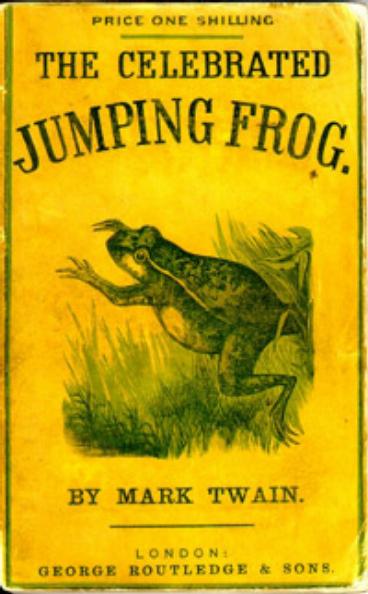| The Celebrated Jumping Frog of Calaveras County | ||
The Jumping Frog
 [Description: Cover to Jumping Frog of Calaveras County]
[Description: Cover to Jumping Frog of Calaveras County]
MT jumped into national prominence on the basis of this tale about Jim Smiley and his frog, first published in a New York newspaper in November 1865 and quickly reprinted around the country. Though MT later discounted it as a "villainous backwoods sketch," it already adumbrates motifs that would stick with him throughout his career — including the use of a vernacular speaker and the unexplained appearance of a mysterious stranger. MT also kept returning to the tale itself, often giving a shortened version of it in his lectures and readings — including the tour with Cable he arranged to promote Huck Finn. I include it among the sources of Huck Finn, though, essentially for the way it shows MT developing the possibilities of a deadpan narrator. Like Simon Wheeler, Huck tells a tale that is designed to make readers laugh without, as MT puts it below, "without ever smiling." From early on in his career, MT believed that when a humorist gave no sign that he understood the meaning of the story he was telling it made the audience that much more likely to laugh. Of course, in Huck Finn the narrative "innocence" of the storyteller is being put to much more profound thematic uses.
MT revised his most famous sketch several times, in modest ways. The text below is the 1865 version, which was titled "Jim Smiley and His Jumping Frog." The cover at left is from the first (1867) British publication of the sketch. This rare edition is one of the most recent additions to the Barrett Collection.
| The Celebrated Jumping Frog of Calaveras County | ||